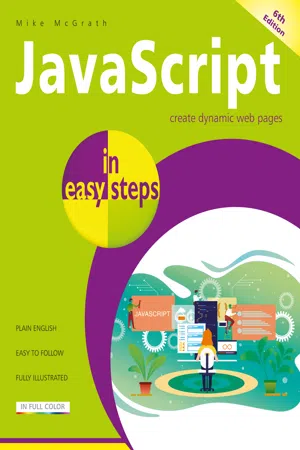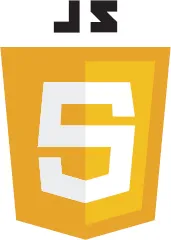
- English
- ePUB (mobile friendly)
- Available on iOS & Android
Javascript in easy steps, 6th edition
About this book
JavaScript in easy steps, 6th edition instructs the user how to create exciting web pages that employ the power of JavaScript to provide functionality. You need have no previous knowledge of any scripting language so it's ideal for the newcomer to JavaScript. By the end of this book you will have gained a sound understanding of JavaScript and be able to add exciting dynamic scripts to your own web pages.
JavaScript in easy steps, 6th edition begins by explaining how to easily incorporate JavaScript code in an HTML document. Examples demonstrate how to use built-in JavaScript functions to work with Math, date and time, random numbers, cookies, text strings, and elements of web pages via the Document Object Model (DOM). You will learn how JavaScript is used with HTML submission forms and how JavaScript Object Notation (JSON) is used for asynchronous browser-server communication. The book examples provide clear syntax-highlighted code showing how to create behaviors for an HTML document to endow components with interactive functionality, to illustrate each aspect of JavaScript.
JavaScript in easy steps, 6th edition has an easy-to-follow style that will appeal to anyone who wants to add functionality to their web pages. It will appeal to programmers who want to quickly add JavaScript to their skills set, and to the student who is studying website design at school or college, and to those seeking a career in web development who need an understanding of client-side scripting.
Fully updated since the previous edition, which was published in 2013.
Table of Contents:
- Get Started in JavaScript
- Perform Useful Operations
Frequently asked questions
- Essential is ideal for learners and professionals who enjoy exploring a wide range of subjects. Access the Essential Library with 800,000+ trusted titles and best-sellers across business, personal growth, and the humanities. Includes unlimited reading time and Standard Read Aloud voice.
- Complete: Perfect for advanced learners and researchers needing full, unrestricted access. Unlock 1.4M+ books across hundreds of subjects, including academic and specialized titles. The Complete Plan also includes advanced features like Premium Read Aloud and Research Assistant.
Please note we cannot support devices running on iOS 13 and Android 7 or earlier. Learn more about using the app.
Information


Table of contents
- Cover
- Title
- Copyright
- Contents
- 1 Get Started in JavaScript
- 2 Perform Useful Operations
- 3 Manage the Script Flow
- 4 Use Script Objects
- 5 Control Numbers & Strings
- 6 Address the Window Object
- 7 Interact with the Document
- 8 Create Web Applications
- 9 Produce Script Magic
- Back Cover